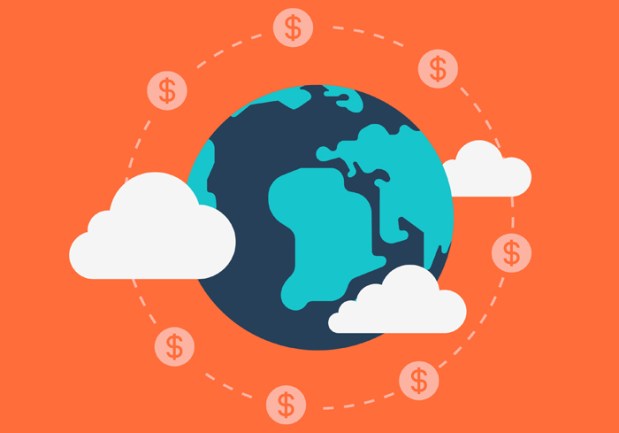Paying It Onward Through Global Gateways

Offering white-label solutions to payment service providers and acquirers is nothing new. Yet, PAY.ON says it has carved out a position as the “the last connection its partners will ever need.” Michael Doron, Managing Director of PAY.ON America, told PYMNTS what that means strategically to PAY.ON and the domestic and international businesses they serve.
Offering white-label solutions to payment service providers and acquirers is nothing new. Yet, PAY.ON says it has carved out a position as the “the last connection its partners will ever need.” Michael Doron, Managing Director of PAY.ON America, told PYMNTS what that means strategically to PAY.ON and the domestic and international businesses they serve.
What is the most important strategic consideration for payments and commerce today?
MD: The most important strategic consideration, I believe, is choosing the “right” partners to achieve your payments and commerce goals. This belief drives the way that PAY.ON – as a white-label solution provider – does business too, and is the reason that our business has grown into a global payments player.
Our approach with our clients and prospects, including ISOs, acquirers, ISVs and VARs, has always been consultative rather than a hard sell. We have over 10 years’ experience as a technical solution provider in the global payments space, and have built an extensive global payment network of certified connections to card acquirers, alternative payments methods, and risk and fraud management providers. Our clients have grown to trust our knowledge and expertise, and rely on our recommendations to help them navigate the highly complex international payment landscape.
Importantly, this expertise is coupled with a commitment to building state-of-the-art payment technology. In the payments space, technology is now – more than ever – a key strategic consideration. The pace of innovation is leaving many payment gateways behind, stuck with legacy systems that are costly and time-intensive to upgrade. This means that flexibility is essential, and this is what has driven the development of our Open Payment Platform. Our broad array of networked card acquirers, alternative payment methods, fraud and risk management partners, and of course our clients, can leverage as little or as much of our platform – which is based on a single, unified open API – as needed to grow their business.
Because our platform is a white-label offering, we really operate behind the scenes as a technology outsourcing partner, empowering our clients to choose and cultivate the best strategic partnerships and negotiate the best commercial deals with payment providers that serve their individual requirements and interests.
We like to say that partnering with PAY.ON is “the last connection you will ever need,” because although we are focused on broadening our reach to new payment providers in new markets, we are continually enhancing and improving the functionality, capabilities and features of our open platform.
How do you trade off getting products to market quickly with getting all of the details perfected, including checking all of the compliance and regulatory boxes?
MD: PAY.ON America (based in New York City) recently celebrated its first anniversary, and it’s fair to say that the first year of operations has been a whirlwind! Prior to launching in North America, we undertook extensive due diligence in the U.S. and Canadian markets, working closely with payment consultants and payment attorneys, and even piloting with a couple of clients. Beta testing our products and solutions in the U.S. market ensured that we had the right product mix, while fulfilling all compliance rules and regulatory requirements. Following the launch, we have remained nimble, adjusting our go-to-market strategy to adapt to the unique selling environment and customs. While there have been challenges along the way, it has been worthwhile in order to better serve our North American client base.
Coming from Europe, we always felt that we had a significant advantage over our domestic competitors, insofar as we already had that ingrained understanding that payment cultures (and therefore the payment methods that need to be enabled) vary widely from country to country. Our experience in navigating Europe’s complex compliance rules and regulations has definitely benefited our North American partners who are looking at cross-border opportunities. For example in Germany, where PAY.ON is headquartered, there are much stricter privacy rules, much more so than in the U.S. This may present challenges for our U.S. competitors, who want to support their merchants who are moving into the European market, but our prior experience in key regions drastically speeds up time to market for our clients.
Strategy is only as good as its execution. What do you do in order to ensure that your ideas don’t collect dust on the virtual bookshelf?
MD: The North American market has become very competitive, as the domestic payment gateway business has become increasingly commoditized. This reinforces the fact that we and our clients must stay agile and adapt quickly to changing market forces.
PAY.ON’s goal is to remain the foremost global payment gateway, which requires constantly investing in our technology, and further enhancing the modular payment solutions that we deliver. As testament to this fact, our platform upgrade utilizes RESTful API architecture, delivering an Open Payment Platform that is accessed through a single, unified API. This allows our clients to build upon our existing gateway infrastructure, creating features and applications for their own business needs, and contributing to the growth of the payments “ecosystem” around our platform.
What is a lesson you have learned in interacting with other businesses as a customer that you’ve applied to your work?
MD: In a sense, we are a “customer” to all of our clients. We need to listen generously to what our clients – and by extension their merchants – are saying. We need to ask focused questions to qualify their needs, objectives and pain points, in order to deliver the appropriate solution for their business. Because of this, we know that it is necessary to adapt and evolve your business and operations constantly in order to be successful. There are just too many upstarts waiting in the wings for you to rest on your laurels. One mistake, a strategic misstep, or simply moving too slowly, and these upstarts are ready to pounce on your customers or market segment. The lesson we have learned is to stay alert and always be learning, responding to clients’ needs and equipping them with technology that keeps them ahead of the curve.
Speaking specifically of the payments and commerce space, what in your opinion has been the most impactful innovation in the last five years and what innovation do you see shaping payments’ future?
MD: This is a big question. Over the last 10-15 years there have been many challengers, plus a lot of hype and investment dollars thrown at startups, all trying to disrupt a market dominated and controlled by incumbent card schemes Visa and MasterCard. Even PayPal, which started back in 1998, took many years to build a critical mass of users and widespread merchant acceptance as an alternative payment method. However, ultimately PayPal and other eWallets are nothing more than the repackaging of credit cards and ACH/direct debit, secured by a two-factor authentication. It has made checkout simpler and more convenient for consumers. On a global scale, in the past five years, none of the payment startups have gathered the critical mass needed to threaten Visa and MasterCard.
Looking ahead, I believe that PayPal should be worried about Alipay’s move into the North American market. Alipay is already much bigger than PayPal on a global scale, and is also the world’s leading mobile payment service with a total volume of $150 billion in 2013. As Alipay seeks to capture market share in North America, you have to question which of these companies would survive if a pricing war erupted.
Apple Pay is also changing the landscape with a play to make payments more convenient. But, similar to PayPal, Apple Pay is essentially a “repackaging” of Visa and MasterCard, and on top of that it can currently only be used by those who own an Apple iPhone 6 or the latest iPad models. Despite Apple’s track record of disruption across multiple industries, Android still has a 76.6 percent share of the global smartphone OS market. This, combined with Samsung’s acquisition of LoopPay, ensures that the so-called “wallet wars” will rage for some time yet, with no obvious winner yet emerging.
I see the greatest impact in the next five years coming from the integration of payments into everyday tools and objects that we use, including laptops, computing devices (tablets), mobile phones, wearables, and soon vehicles and other household appliances. Ultimately, I believe the growth of the so-called “Internet of Things” will change payments more radically than, for example, much vaunted block-chain technology utilized by cryptocurrencies including bitcoin.
Personally, I would encourage more innovation to protect our identities around the mainstream schemes we have today, and prevention of fraud using biometrics and other secure authenticating technologies. Cybercrime is rapidly evolving, and payments innovation will be crucial to ensuring that transaction processing is safe and secure.

Michael Doron
Managing Director, PAY.ON America Inc
Michael Doron is Managing Director for PAY.ON America, leading commercial efforts in North America and expanding PAY.ON’s white label global payment gateway business. Prior to joining PAY.ON, Doron held executive roles as Director of Sales at Ogone, Inc. (an Ingenico company), as VP Americas at ClickandBuy (a subsidiary of the Deutsche Telekom’s Business Unit Payment BUP), and as Co-Founder and VP of Business Development at Broker Processing Services (BPS).
PAY.ON is official Cross-border Commerce sponsor at the CNP Expo in Orlando, Florida, May 18-21. Email newyork@payon.com to arrange a meeting at the show, or visit booth #601.
